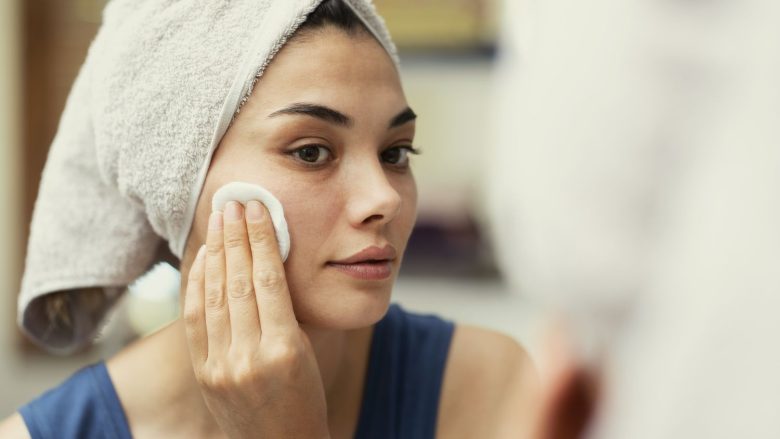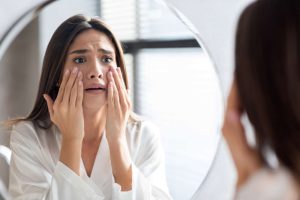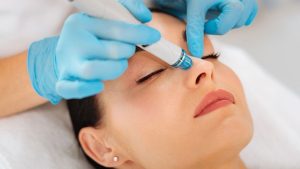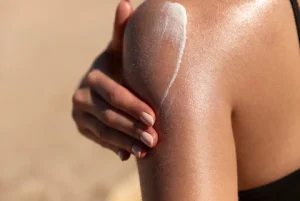Your skin is your body’s largest organ, and it requires and warrants care and attention, especially at night. When you are asleep, your skin shifts into a sort of repair mode, and therefore, this is the best time to nourish and rejuvenate it. Having a proper skincare routine can help with the many sleepless nights you might be experiencing because of issues like dryness, acne, ageing, or uneven skin tone. Night creams and moisturisers can do wonders for you and will leave you with healthier-looking, well-kept skin. Whether you are advanced or new to the skincare realm, knowing how to meticulously and strategically approach a nighttime skincare routine can significantly improve the appearance and overall health of your skin. This article will explain the important steps that should be taken to improve skin health during the night while detailing everything that goes into a skincare routine.
The Significance of a Skincare Routine at Night
As a result of the normal pollution, dirt, and UV rays throughout the world, skin faces many stressors during the day. All of these may damage the skin by placing undue stress on it, clogging pores, and causing harm to the skin barrier. During the night, however, when all is calm, the skin begins the healing process and aims to generate new cells. A skincare routine for night aids this biological process by helping the skin recover. Not taking care of skin at night, which people often tend to do, can result in impurities, breakouts, and premature skin ageing. A couple of minutes of skin care at night bears outstanding results in terms of actually resolving skin issues over time and helps achieve a youthful appearance.
Step 1: Take Off Makeup and Clean
The first and arguably the most important step in one’s skincare routine every night is taking off makeup and cleansing. Skin tends to accumulate makeup, dirt, oil, and pollutants throughout the day, leading to clogging of the pores. Use a gentle makeup remover or micellar water to take makeup off, then follow up with a cleanser that best suits your skin type. Cleansing also eliminates several superficial skin impurities and helps in the absorption of all the products that follow. Do not use harsh cleansers that will wash away the natural oils from your skin because that will leave you feeling dry and irritated. An uncluttered surface allows your skin to absorb the products effectively.
Step 2: Exfoliate (As Needed)
Exfoliation has been considered to be an important step towards achieving beautiful and glowing skin, but is most often neglected. One of its main functions is to eliminate dead skin, which can dull one’s complexion, obstruct pores leading to breakouts, and much more. But keep in mind that exfoliation is not something that has to be done daily, but rather 2-3 times a week based on one’s skin type. Doing exfoliation too frequently can risk damaging one’s skin barrier which can in turn aggravate the skin. Using alpha hydroxy acids (AHAs) or beta hydroxy acids (BHAs) enable the use of gentler and skin friendly chemical exfoliants. It is better to exfoliate at night because it allows the skin to heal itself while also letting the products used during the process to be absorbed better.
Step 3: Apply Toner
Just as exfoliation, toning is versatile; it can address a variety of skin issues, from dehydration to hyperhydration to tilting or putting out skin pH. After cleansing, apply the toners over any remaining impurities and adjust pH levels of the skin before other steps. For hyaluronic toners, witch hazel-based ones are more calming, or calming salicylic toners for the acne-affected skin. Additionally, help aid skin with a pore-tightening effect as well as adding a base layer for the serum and moisturiser. Helping your skin flush out toxins through frequency of toners can adapt to the user’s needs and best suit their skincare regime for a maximum appropriate response.
Step 4: Apply Targeted Serum
In this case, the treatment is defined by the target area, which essentially is hyperpigmentation, fine lines, wrinkles, or dry areas. These serums tend to have active constituents like vitamin C, retinol, peptides, or niacinamide, which boost active penetration. It is recommended to first pat your skin post-toning because this allows for better absorption of the active ingredients. For instance, vitamin C serum is useful in getting rid of dark patches, while retinol serum helps to reduce fine lines through increased collagen synthesis. Remember to apply the serum at night because the active ingredients can work efficiently when the skin is at rest.
Step 5: Dehydration Moisturizing Cream
Moisturising helps to seal the hydration filled in the skin for even makeup application. Choose a moisturiser according to your skin type. Gel moisturisers serve best for overly oily skin, while creamy ones are lifted for drier ones. A gentle bond is formed between the skin and the environment through hyaluronic acid, ceramides, and glycerin, and applying it at night gives a supple feeling while keeping the skin nourished. Make sure to use face moisturiser afterward to retain moisture in the face.
Step 6: Eye Cream Matters, Too
A good eye cream should be considered for use at night, as the skin around the eyes is softer and thinner than the rest of the skin on the face, causing it to dry out and show fine lines, as well as becoming puffy. Wrinkles and puffiness can be avoided by applying eye cream at night. Always look for eye cream with caffeine for reduction of puffiness, peptides for collagen stimulation, or hyaluronic acid for hydration. Apply a small dab of eye cream with your ring finger around the bone of your eyes as it exerts the least pressure. If eye cream is used consistently, the under-eye area can become brighter and reduce the appearance of dark circles.
Step 7: Overnight Masks or Spot Treatments Can Be Effective
There is room for additional effort, which can be achieved by using an overnight mask or a spot treatment in your nighttime routine. Overnight masks are specially made to deeply moisturise and nourish the skin, allowing the skin to heal overnight and providing a radiant glow in the morning. These treatments, salicylic acid or benzoyl peroxide, can also be applied to target acne and dark blemishes as they help speed up the healing process and inflammation reduction. An effortless approach to your skin problems, as these treatments are complementary to the existing skincare regimen and tackle a specific unique problem of the skin.
Conclusion
A nightly skincare regimen isn’t only for beauty 2nps: it is an active approach to improving skin health and appearance. With these steps, you foster specific concerns your skin may have while supplementing its natural repair mechanisms to ensure that you wake up with pulchritudinous skin. Consistency is important. As long as you do not stray from your skincare routine, you are sure to witness improvements in your skin’s strength, tone, and enhancement. Start today and allow your skin to heal.
FAQs
1. How long does it take to see results from a nighttime skincare routine?
Improvements are cumulative and are observable between the range of four to six weeks; however, these thresholds may vary based on the specific skin types and problems being treated.
2. Can I use the same products for my morning and nighttime routines?
Moisturisers and sunscreens can serve a double duty, while retinol or exfoliants should only be used at night to avoid sun sensitivity.
3. What should I do if my skin feels irritated after starting a new routine?
Immediately consult a dermatologist or allied health professional to rule out any precocious issues that may exist as a result of the new product.
4. Do I need to incorporate all the steps of a nighttime skincare routine?
Not really. A skincare schedule should be designed based on what your skin needs. For instance, someone with sensitive skin can completely avoid exfoliation or do it infrequently.
5. Can I avoid putting moisturiser on if I have oily skin?
No, moisturiser is crucial regardless of skin type. Instead, choose a weightless lotion that does not block the pores and is non-comedogenic.




